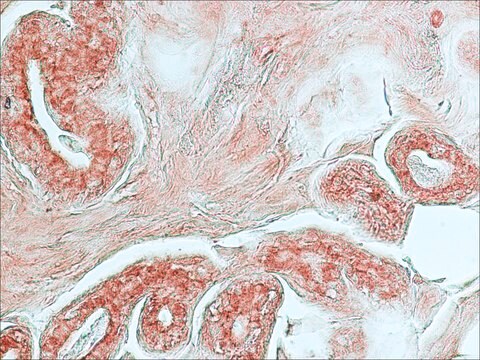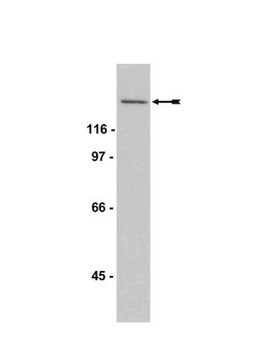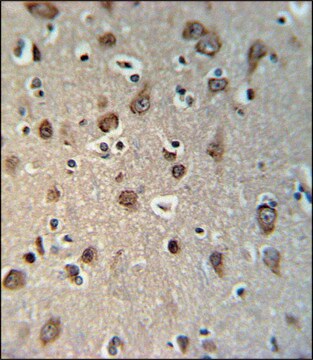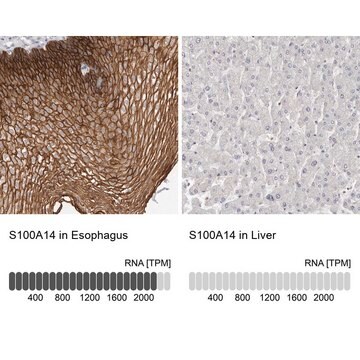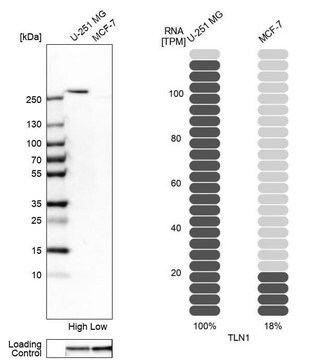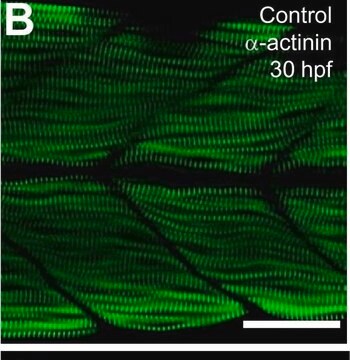MABE867
Anti-Mad1 Antibody, clone BB3-8
clone BB3-8, from mouse
Synonim(y):
Mitotic spindle assembly checkpoint protein MAD1, Mitotic arrest deficient 1-like protein 1, MAD1-like protein 1, Mitotic checkpoint MAD1 protein homolog, HsMAD1, hMAD1, Tax-binding protein 181
About This Item
Polecane produkty
pochodzenie biologiczne
mouse
Poziom jakości
forma przeciwciała
purified immunoglobulin
rodzaj przeciwciała
primary antibodies
klon
BB3-8, monoclonal
reaktywność gatunkowa
human
metody
immunofluorescence: suitable
western blot: suitable
izotyp
IgG1κ
numer dostępu NCBI
numer dostępu UniProt
Warunki transportu
wet ice
docelowa modyfikacja potranslacyjna
unmodified
informacje o genach
human ... MAD1L1(8379)
Opis ogólny
Immunogen
Zastosowanie
Immunoflourescence Analysis: A representative lot from an independent laboratory detected Mad1 in HeLa cells (Screpanti, E., et al. (2011). Curr Biol. 21(5):391-398.).
Western Blotting Analysis: A representative lot from an independent laboratory detected Mad1 in HeLa cell lysate (Screpanti, E., et al. (2011). Curr Biol. 21(5):391-398.).
Epigenetics & Nuclear Function
Cell Cycle, DNA Replication & Repair
Jakość
Western Blotting Analysis: 0.5 µg/mL of this antibody detected Mad1 in 10 µg of HeLa cell lysate.
Opis wartości docelowych
Postać fizyczna
Przechowywanie i stabilność
Inne uwagi
Oświadczenie o zrzeczeniu się odpowiedzialności
Nie możesz znaleźć właściwego produktu?
Wypróbuj nasz Narzędzie selektora produktów.
Kod klasy składowania
12 - Non Combustible Liquids
Klasa zagrożenia wodnego (WGK)
WGK 1
Temperatura zapłonu (°F)
Not applicable
Temperatura zapłonu (°C)
Not applicable
Certyfikaty analizy (CoA)
Poszukaj Certyfikaty analizy (CoA), wpisując numer partii/serii produktów. Numery serii i partii można znaleźć na etykiecie produktu po słowach „seria” lub „partia”.
Masz już ten produkt?
Dokumenty związane z niedawno zakupionymi produktami zostały zamieszczone w Bibliotece dokumentów.
Nasz zespół naukowców ma doświadczenie we wszystkich obszarach badań, w tym w naukach przyrodniczych, materiałoznawstwie, syntezie chemicznej, chromatografii, analityce i wielu innych dziedzinach.
Skontaktuj się z zespołem ds. pomocy technicznej